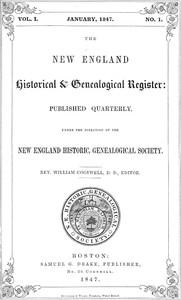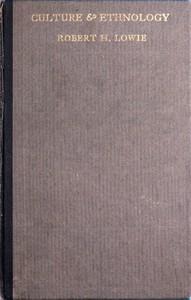Read this ebook for free! No credit card needed, absolutely nothing to pay.
Words: 40967 in 8 pages
This is an ebook sharing website. You can read the uploaded ebooks for free here. No credit cards needed, nothing to pay. If you want to own a digital copy of the ebook, or want to read offline with your favorite ebook-reader, then you can choose to buy and download the ebook.
PREFACE This booklet is an attempt at popularization. The first four chapters are practically identical with as many lectures, delivered in 1917 as the January course offered by the Department of Anthropology of the American Museum of Natural History. The purpose of the January series, which was instituted in 1914 by Dr. P. E. Goddard and the writer, is to acquaint an audience of intelligent laymen with some of the results of modern ethnological work, the emphasis being on principles and problems, rather than on purely descriptive detail. The course, in short, occupies an intermediate position between technical discourses addressed to scientists and the more popular lectures which are designed to furnish mainly entertainment. Each year different topics have been chosen and several members of the staff have cooperated. Owing to the dearth of recent ethnological literature reflecting the position of American field-workers, and at the same time accessible to the interested outsider, I was easily persuaded to issue the 1917 lectures in the present form.
The last chapter may not seem to fit within the scope of this publication. It is obviously more technical than the rest in treatment and may appear to deal with too special a topic. My object, however, was to conclude with a concrete illustration of ethnological method, and I naturally selected a subject to which I had paid considerable attention during the last two years. It is a subject in which Morgan was able to arouse the interest of hundreds of laymen; and I can see no reason why an up-to-date exposition of the problems involved should not be able to hold their attention.
ROBERT H. LOWIE
These, then, represent the type of phenomena comprised under the caption of culture. They exist, and science, as a complete view of reality, cannot ignore them. But a question ominous for the worker who derives his bread and butter from ethnological investigation arises. All the phenomena mentioned and the rest of the same order relate to man, and they relate to man not as an animal but as an organism endowed with a higher mentality. Tylor's definition expressly speaks of 'capabilities and habits'. But there is a science that deals with capabilities and habits, to wit, psychology. Is it, then, necessary to have a distinct branch of knowledge, or can we not simply merge the cultural phenomena in those of the older science of psychology? It is this question that concerns us here. On the answer must depend our conception of culture and our attitude towards a science purporting to deal with cultural phenomena as something distinct from other data of reality.
In seeking light on this subject we must understand what sort of problems arise from the contemplation of cultural facts and attempt to connect them with the established principles of psychology. A few concrete examples will illustrate the situation.
Nor are we more fortunate when we turn to psychology for an account of how the original Chinese inventor came to conceive his epoch-making idea. This fact, of course, falls under the heading of 'imagination', and about imagination psychologists have much to tell us. But what, after all, does their interpretation amount to? We learn that imagination, as distinguished from the power of abstract thought, is the power of forming new concrete ideas. Since even the concrete individual idea is complex, being a product of association, its elements may be linked differently so as to produce new combinations. "The inventor of a new mechanism," says H?ffding, "combines given elements, the laws of whose activity he knows, into a totality and a connection which has no complete parallel in experience." The scientist tries all possible combinations among his elements of experiences, forming a succession of individual ideas, which are rejected until the one appears that adequately represents reality.
To turn from the technique of paper manufacture to a very different cultural feature in order to test the possibility of merging the observed phenomena in the principles of psychology. In several parts of the globe, and most prominently in parts of South America, the aborigines practise a custom known as the 'couvade', which forces the father of a new-born child to subject himself to a period of inactive confinement and a series of rigorously observed dietary and other regulations. Let us, for the sake of bringing out the point in high relief, ignore all historical considerations and concentrate exclusively on the subjective elements involved. Whence, then, this strange and wholly irrational association of ideas between fatherhood and a group of taboos? Now the subject of the association of ideas occupies hundreds of pages in psychological literature, yet all this, in itself valuable enough, material has no bearing on our problem, because it is again far too general. We do not doubt for a moment that the association we desire to have illuminated is due either to contiguity or to a perceived similarity of ideas, but why have we this particular association instead of the limitless multitude of associations that would be equally intelligible by the same formulae?
Let us turn from mystic numbers and decorative designs to another aspect of primitive life. The Turkish tribes of western Siberia have a form of religion based on the belief that certain individuals enjoy the hereditary privilege of acting as intermediaries between their ancestral spirits and the people at large. With the aid of his sacred drum the shaman, as such an intermediary is technically called, is able to summon the supernatural beings, cure the sick, foretell the future, separate his own soul from his body and send it to the upper realms of light or the nether regions of darkness. Now, although a particular individual inherits the shaman's office from his father, he receives no formal instruction nor does he make any active preparation for his mission. His call comes in the form of a sudden paroxysm. He is seized with a feeling of languor and a fit of violent convulsions, with abnormal yawning, and a powerful pressure on the chest, which causes him to utter inarticulate screams. He begins to shiver with cold, rolls his eyes, suddenly leaps up and madly circles about until he falls down covered with perspiration and writhing in epileptic spasms on the ground. His members are devoid of sensation, his hands grasp without discrimination red-hot iron, knives, pins; he swallows such objects without suffering the slightest injury, and again ejects them from his mouth. Finally, the prospective seer seizes a shaman's drum and assumes the shaman's office. Disobedience to the spirit's call would spell disaster, madness and death amidst the most horrible tortures.
The na?ve reaction to this narrative on the part of common sense in the familiar form of common ignorance will probably be that the European traveler who is our authority is a very gullible individual if he believed his native informant's statements. How can an individual be seized with such a spasm as that described? How is it possible for him to become devoid of sensation? Nevertheless, nothing is more certain than that the account given is substantially correct. It is simply a particular form of nervous affliction very common throughout Siberia and attested by dozens of trustworthy eyewitnesses. This Arctic hysteria, as it has been misnamed , manifests itself principally in two ways. Either the individual falls victim to an indiscriminate mania for mimicking the acts of others; or he is seized with the sort of paroxysm described for the Turkish shaman. Nothing is clearer than that in neither case is there usually conscious deception. Sometimes the imitation mania subjects the sufferer to ridicule and pain, as when an old woman in imitation of a Cossack, seized a salmon with her teeth, ran up a hill and down again, unable to prevent herself from plunging into the water, though normally she was barely able to walk. Similarly, the numerous hysterical individuals of the other type who do not become inspired shamans cannot possibly derive any benefit from their fits.
Abnormal psychology here steps in and teaches us that such trances are involuntary and not the result of fraud, that they occur in our own civilization and are accompanied with extraordinary lack of sensibility to pain, in short, psychiatry classifies the observed phenomena and tells us what we are really dealing with. It prevents a misconception alike of the shaman's activities and of the attitude of his people towards him.
If culture is a complex of socially acquired traits, it might appear that race could not possibly have any influence on culture, since by racial characteristics we understand those which are innate by virtue of ancestry. This, however, by no means follows. In order that certain traits be acquired, a certain type of organic basis is an absolute prerequisite; a chimpanzee or a bat is not able to acquire human culture through social environment. From an evolutionary point of view it appears, therefore, very plausible at first blush that within the human species, likewise, differences in organization should be correlated with the observed cultural manifestations of varying degree and complexity. There was, undoubtedly, some stage in human evolution where the organic basis for culture had not yet been acquired. Can the several races be regarded as transitional forms, each possessed of certain capabilities determining and limiting its cultural achievement? This question can be viewed in two ways. Comparative psychology may give us direct information as to qualitative and quantitative racial differences that would affect cultural activity. Or, we may infer such differences as the only possible causes for the observed cultural differences. Both modes of approach are helpful for a comprehension of the problem.
Until recent years the psychological evaluation of primitive tribes rested largely on the offhand judgments of travelers and missionaries. With the advent of more exact psychological laboratory methods, these have been, in some measure, applied by competent investigators to aboriginal populations. Unfortunately, the results hitherto secured are somewhat meager. There are technical difficulties, among them the necessity of examining fairly large numbers of individuals in order to get a good sample of the population. Worse still, laboratory methods are most effective in regard to what may be called the lower mental operations, which partake almost more of a physiological than of a strictly psychological character. Clearly enough, what we should be most desirous of knowing is how primitive compares with civilized man in logical thought and imagination. But these are precisely the things not readily tested, and here the additional technical difficulty comes in that they can hardly be examined at all without a far more intimate knowledge of the native languages than the investigator is likely to command. Nevertheless, something has been done and I will attempt to present as briefly as possible the essential results, following Thorndike's convenient summary.
Free books android app tbrJar TBR JAR Read Free books online gutenberg
More posts by @FreeBooks

: An Essay on Demonology Ghosts and Apparitions and Popular Superstitions Also an Account of the Witchcraft Delusion at Salem in 1692 by Thacher James - Superstition; Witchcraft; Witchcraft Massachusetts Salem


: The New England Historical & Genealogical Register Vol. 1 No. 1 January 1847 by Various Cogswell William Editor - New England Historic Genealogical Society Periodicals; New England History Periodicals; New England Genealogy Periodicals; Genealogy Periodica








